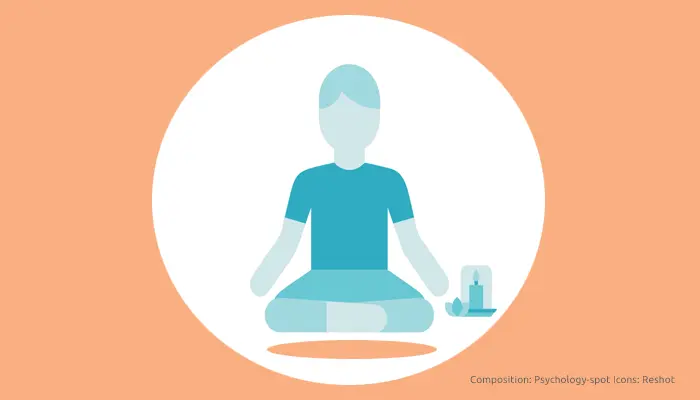
However, breathing well is not as easy as it seems, especially because we have been breathing badly for years. Most of us breathe shallowly, don’t take in too much air and expell it immediately. The good news is that we can learn to breathe better with simple breathing techniques that can be applied anywhere, to rediscover calm whenever we need it.
1. Samavritti Pranayama (Breathing Equitable)
What is it good for? It is a simple but very effective technique for mind relaxation, increase concentration, oxygenate the body and strengthen the muscles involved in breathing.
How it works? To begin, sit with your back straight and close your eyes. Breathe deeply for a few minutes, without worrying about the technique. Then, inspire mentally counting to 3, hold the air in the lungs counting to 3, expires and keep counting to 3, empty the lungs always counting to 3. The most important thing is to respect the same time for the four phases, so if you can’t get to three, do it only up to 2, you can gradually increase the duration, but without forcing too much.
When it works the best? Anytime, anywhere, although it is a very effective technique before bedtime. In fact, if you have some trouble sleeping, it is a perfect exercise to relax as the classic trick of counting sheep could distract you too much from your goal.
2. Abdominal breathing or diaphragmatic
What is it good for? This breathing exercise is based on the movement of the diaphragm, the lower belly sucks air into the lungs and sends it back to them. In fact, it is called abdominal breathing because when the diaphragm is down, pushes n the abdominal organs inflating the belly. This breathing technique stimulates blood oxygenation, massages the abdominal muscles, helps the intestinal transit and is very relaxing.
How it works? Lie on your back and place one hand on your chest and the other on the belly. Exhale taking small sighs, to remove residual air from the lungs. Now breathe deeply through your nose, pushing the air into the abdomen, as if you wanted to push the hand that you’ve placed on this. Hold the air for a few seconds and then expel it relaxing the belly, you’ll feel like your hand goes down. Remain a few seconds with the empty lungs, feeling relaxed, and when you feel the urge to inspire again, do it deeply and slowly. The goal of diaphragmatic breathing is to do 10 slow deep breaths per minute, for 10 minutes each day.
When it works the best? This breathing exercise is very effective dealing with stressful situations, because when you gain practice you don’t need to lie, you can do it sitting or even standing.
3. Nadi Shodhana (Alternate Nostril Breathing)
What is it good for? This breathing exercise is ideal for generating a state of calm and wellbeing. It also balances the two hemispheres of the brain, it frees us from daily stress, relieves fatigue and releases the energy of the body’s energy channels.
How it works? Sit with your spine straight and relax the shoulders. Place the tip of the index finger and middle finger of your right hand between the eyebrows, put the ring finger and little finger on the left nostril and the thumb on the right one. The ring and little fingers are used to open or close the left nostril and the thumb the right one. Press your thumb on the right nostril and exhale gently through the left nostril. Now breathe through the left nostril and then gently press it with the ring and little fingers. Remove the right thumb on the right nostril and exhale through this. Inhale from the right nostril and exhale from the left. So you’ve completed a full round. Now continue inhaling and exhaling alternating the nostrils. Ideally, you should complete nine rounds.
When it works the best? When you need an extra dose of energy, so it is recommended not to practice it before going to bed. In fact, it is a technique to unlock energy and increase the level of concentration and activity. It is the equivalent of a cup of coffee.
As this is a complex breathing exercise, I add a short video here where the technique is shown. Although once learned you’ll see that it’s actually very simple.



